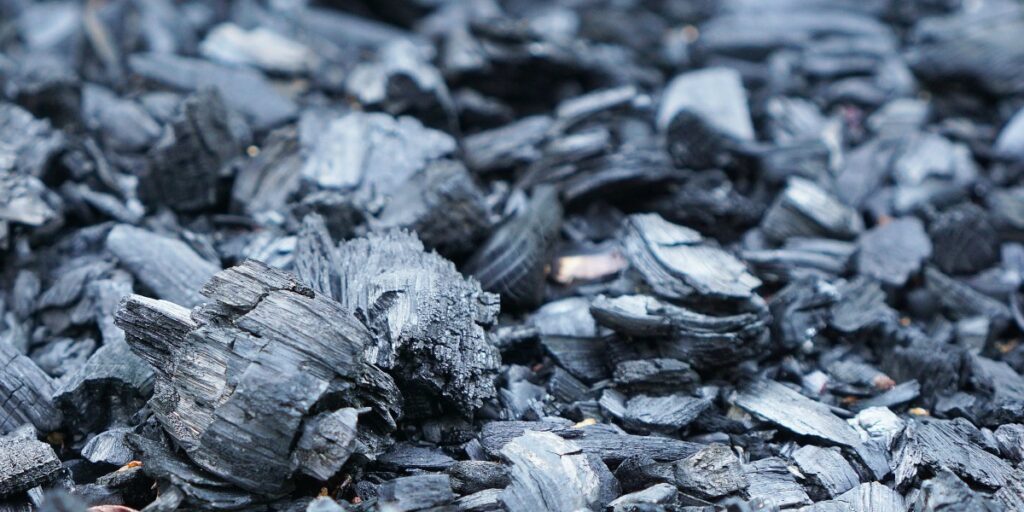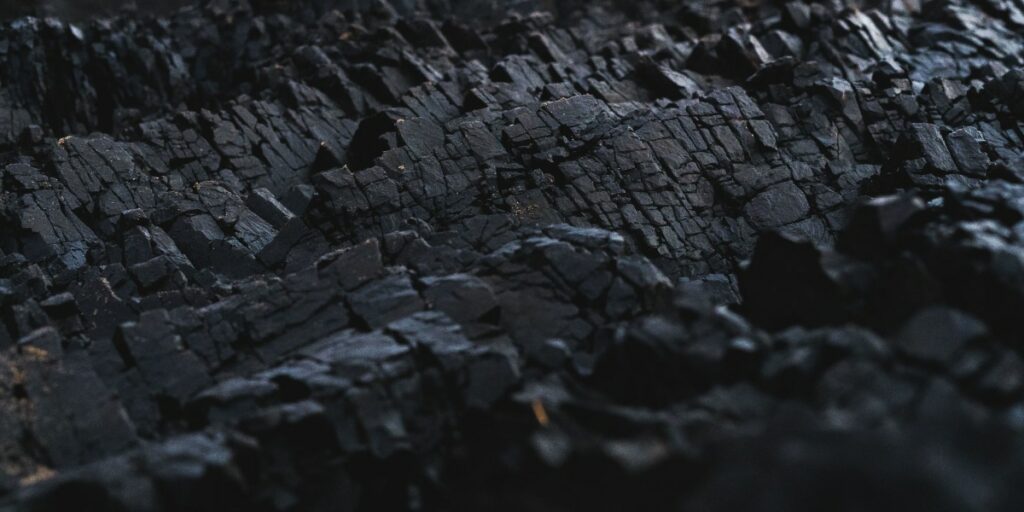Charcoal Filters and Carbon Filters
Charcoal is an extremely porous carbon that forms when millions of micro-pores open between carbon atoms after mixing with oxygen. Charcoal can attract and hold very many contaminants passing through it. People treat charcoal with oxygen to make activated charcoals that are effective at adsorbing odors and colored substances from liquids and gases.
Table Of Contents
−- Charcoal Filters and Carbon Filters
- How Do Charcoal Filters Work?
- Benefits of a Charcoal Filter
- The History of Activated Charcoal
- How Activated Charcoal Works for Carbon Filters
- Types of Carbon Filters
- Types of Charcoal Filters
- Reasons to Use Charcoal Filters as A Whole House Filtering Solution
- Benefits of Whole House Charcoal Filters
- DIY-How to Make a Carbon-Based Charcoal Filter at Home
The activated charcoal produces a highly porous surface of 300-2,000 meters per gram. Activated charcoal adsorbs contaminants by chemical attraction. The large porous surfaces of active charcoal provide the perfect place for bonding. The carbon surface attracts chemicals, chlorine, and carbon-based impurities and traps them.

Some chemicals are neither attracted nor trapped, e.g., sodium, nitrates, etc., and active charcoal is a partial filter. However, once all pores are filled, the filters must be replaced because the activated charcoal stops working.

How Do Charcoal Filters Work?
First, we don’t use those black barbecue bricks to filter water. Water filters use activated charcoal, available in solid blocks or loose beads in stores. To make activated charcoal, you must heat ordinary charcoal without oxygen at 1000F. Next, treat the charcoal with argon and hydrogen. Superheat while adding oxygen to create a porous structure. The end product is activated charcoal.
Active charcoal works through adsorption, a process of chemically attracting and binding contaminants. Many pores open up during activation, increasing the surface area for adsorption. Active charcoal is useful for water filtration because it removes toxins from water, i.e., chlorine and volatile organic compounds. It does not strip beneficial minerals from the water, nor does it use chemicals. Carbon attracts some impurities, but those it does not draw allow them to pass.
Adsorption leads to the formation of bonds between the compound and the filter. All impurities are retained in the filter, and once the pores are filled, it stops working. The filters need regular replacements. It is cheap, making it a popular choice for many households.
Benefits of a Charcoal Filter
- It does not remove useful nutrients: Healthy drinking water must contain useful mineral elements. These elements are responsible for the good taste and odor of the water. However, the chemical composition of activated charcoal allows it to absorb unhealthy organic compounds and let all other minerals to pass-through.
- It makes water healthier: Active charcoal filters remove many harmful elements in the water. In addition, it adds useful minerals, e.g., calcium and magnesium, to make your water healthier to drink.
- Charcoal Filter Improves the Flavor: People hate tap water because of its bad odor and metallic taste. The taste and smell mostly come from treatment chemicals. Pass your water through a charcoal filter, and it will remove the stains to make it more palatable.
- Charcoal filters are cheap: Charcoal filters are more economical to produce and sell to consumers than other types of water filters.
- They are easy to maintain: Replacement parts are cheap to buy and easy to install. Replace the charcoal at least once every 6 months. Other factors can make you change the filter severally per year.
The History of Activated Charcoal
Sumerians and Egyptians were the first persons to produce charcoal for fuel and reduce elements when manufacturing bronze. Later, they discovered that it could be used as a preservative (antibacterial properties), especially in preventing wood rot. Later advancements made charcoal be used to seal holes in ships. It was also used to scorch wood barrels to enhance the preservation of the items in them, e.g., water. The use of charcoal progressed up to date. Today, people can make activated charcoal purposely to suit their filtration needs.
How Activated Charcoal Works for Carbon Filters
Activated carbon can remove pollutants from water in 2 ways only. One is adsorption, and the other is catalytic reduction. “Adsorption” refers to the attraction of molecular gases, ions, dissolved solid or liquid into a surface. In “absorption,” the particles are usually taken up by volume, not by the surface.
The catalytic reduction is where the positively-charged activated carbon attracts negatively charged ions of the contaminants. Adsorption filters residual disinfectants, e.g., chlorine, but catalytic reduction removes chloramines. Using active carbon as a filter reduces the amount of hazardous organic chemicals and hundreds of human-made contaminants from ground and tap water.
Charcoal filters are effective at removing heavy metals, chloramines, and hydrogen sulfide. However, charcoal filters allow dissolved inorganic minerals, salts, copper, and radionuclides to pass. In such instances, it is highly recommended that you use reverse osmosis filters.
Types of Carbon Filters
There are 2 types of carbon filters used in the charcoal filter industry:
- Powdered block charcoal filters (PAC).
- Granular activated charcoal filters (GAC).
PAC has smaller particles, providing a larger surface area to volume ratio than GAC. That makes PAC more effective at removing impurities than GAC. In addition, activated charcoal is usually drenched with silver to prevent bacteria from multiplying within the charcoal filter.
Types of Charcoal Filters
PAC Powdered Carbon Filters
These carbon blocks do not allow the movement of carbon particles relative to each other. That helps counter water channeling, a common problem in GAC charcoal filters. The performance of a powdered carbon block charcoal filter system is evaluated based on:
- Water length within the block.
- The particle size of carbon distribution.
The manufacturer determines the design satisfies each condition based on the water quality and quality the filter is expected to handle.
Issues in PAC Powdered Carbon Filters
When smaller particle sizes are used, the charcoal filter gets more ability to remove minute-sized contaminants. However, the rate of filtration drops as smaller particles adds resistance to the flow of water. Many people who use gravity for their charcoal filters suffer from low filtration rates. PAC charcoal filters still have more benefits compared to when using GAC charcoal filters.
Both PAC and GAC charcoal filters allow some contaminants to pass through them. Even with fine particles, PAC cannot remove bacteria and viruses. First, test the water to determine the contaminants present in it before you proceed using water filters.
GAC Carbon Filters
This filter is a loose bed of carbon filters. Carbon is usually held in a cylinder casing. The velocity of water passing through the housing determines the ratio of the carbon filter. GAC carbon filters counter the problem of fluidization. However, the loose structure present in GAC carbon filters creates a limit to enjoying the full benefits of the carbon filter.
Issues in GAC Powdered Carbon Filters
Water channeling is very common. Water finds its way down through the loose carbon particles. Bacterial growth is expected because there are loose packets of contaminated water within the loose particles carbon bed. That is a suitable environment for bacterial growth, which finds its way into clean water. Wearing of carbon particles is commonly caused by friction in the bed. GAC carbon filters can’t clean turbid water, nor can they be regenerated.
Reasons to Use Charcoal Filters as A Whole House Filtering Solution
The primary benefit of using charcoal filters is their effectiveness in removing residue deposits and protecting appliances from getting damaged.
Benefits of Whole House Charcoal Filters
Charcoal filters are the best for homes that use a lot of water frequently. They are effective at removing unpleasant tastes in water. Charcoal filters do not use electricity to run, bringing an economic advantage of avoiding increased expenses. They are passive filters, primarily relying on pipe pressure and gravity.
Charcoal filters remove harmful contaminants and retain nutrients that are beneficial to your body. These filters have minimal maintenance because you only need to clean or replace the filters once in several months. You can customize your carbon filters to counter specific contaminants in your water. In addition, you can pair other filters with charcoal filters to help remove traces of volatile substances for more enhanced safe water.
Disadvantages of Carbon-Based Charcoal Filters
- If you keep your charcoal filter out of use for over a month, bacteria will grow inside it and could contaminate the water during the subsequent use.
- Charcoal filters do not remove nitrates, toxic minerals, and many micro-organisms which are potentially dangerous to people if ingested.
Despite their limitations in their use, the advantages of carbon filters outweigh their shortcomings. The carbon filters are the best options for your plan if your primary contaminants are impurities, toxic substances, and chlorine. Buy a carbon filter ranging from $500 to $1500 depending on the manufacturer’s brand and help protect your loved ones.
DIY-How to Make a Carbon-Based Charcoal Filter at Home
This is a step-by-step guide on making a carbon filter using locally available materials.
- Get fresh charcoal.
- Smash your charcoal. Crush into powder or gravel-sized level.
- Get a tall cylinder with open ends.
- Use fabric of tightly packed grass to fill the small opening. That prevents the charcoal from falling off. You can also use a bottle.
- Fill the pack the crushed charcoal into the cylinder tightly. The drip rate should be slow on the lower end. If it is fast, empty the cylinder and pack it again.
- At the top of the charcoal in the cylinder, you might consider adding clean sand or grass to prevent the charcoal from being displaced by the water you are adding.
- Place a container below your filter to collect the water you filter.
- Pour untreated water through your charcoal filter. The drip should be slow.
- After collecting your filtered water, pass it through the filter 2-3 times until it becomes clear.
- After water gets the clarity you want, boil it to remove pathogens and enjoy your clean water.

Jay
Jay is a health and wellness enthusiast with expertise in water quality and nutrition. As a knowledgeable advocate for holistic well-being, Jay successfully manages Type 2 Diabetes through informed lifestyle choices. Committed to sharing reliable and authoritative insights, Jay combines firsthand experience with a passion for enhancing health."

